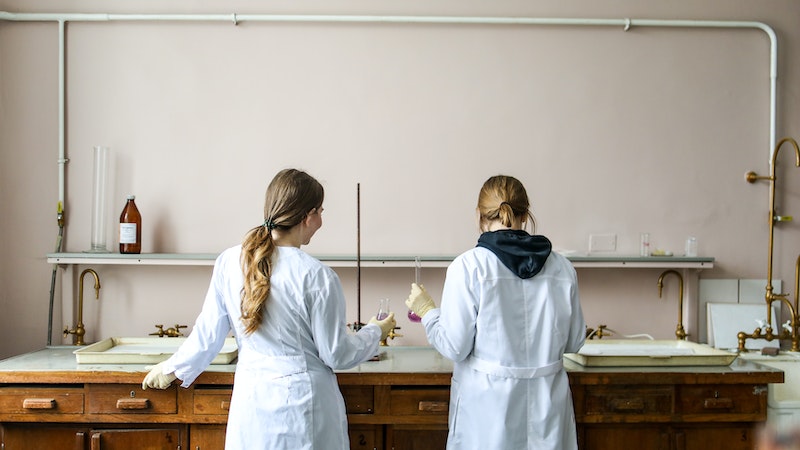More than 50% of students feel that they are not engaged in their studies, which concerns 80% of teachers. This lack of enthusiasm toward learning is because 59% of American students do not see any practical use of what schools teach them. Education should prepare students for real-world challenges and equip them with applicable solutions. However, most educators lean more toward building theoretical knowledge rather than practical.

As a teacher, you have a significant role in preparing your students to face the world. How successfully you do so depend on providing them with practical learning, which is something both you and your students can benefit from. However, you must first understand the following content about experiential learning to impact your student’s education positively.
Changing Educational Landscape
Traditionally, learning consisted solely of textbook materials and the memorization of theoretical knowledge. However, the recent shifts and trends in education highlight the importance of applying learning rather than simply acquiring it. The system must adapt to the future, including integrating technology.
With around 8.5 million American students enrolled in online classes in 2021. This type of learning provides a flexible approach to learning and focuses on instilling practical skills. You can also take advantage of this shift as a teacher by enrolling in online education programs to advance your skills. These online programs can teach you proactive methods to engage your students and transform your teaching style that specializes in experiential learning. Since there are no physical classes, you can keep working as a teacher while you learn new strategies. This approach is highly beneficial as you can immediately put what you learn into practice and see the results yourself.
You and your students can benefit from the changing educational landscape. As technology has made access to education easier, learning is attainable for everyone now. Teachers can conveniently advance their skills through online programs, and students can receive a more engaging education through online learning management systems.
Mixing Different Approaches
Practical learning is a hands-on approach that teaches students how to apply what they learn in classrooms in real life. On the flip side, traditional learning involves teaching basic concepts which students need to memorize.
It would be best to understand the relevance of both these approaches to make your classroom more engaging. While building practical knowledge is essential in today’s educational sector, you must also recognize the importance of constructing basic concepts. For example, suppose you’re teaching a physics class about gravity. Before you dive into the practical aspect and elaborate on how engineers use this concept to design roller coasters, you must first teach your students its basic theory. Without explaining the basic concepts of gravity, your students might be unable to connect the dots between what they’ve learned and how to apply it.
The best teaching style would be a mix of both of these approaches. You can utilize fun physics experiments like beam hanging to show the pull of gravity or dropping two different masses to explain how all masses fall at the same rate after explaining the concepts. This technique ensures your students can correctly develop their understanding of theory and be able to see its uses in daily life.
Benefits
Practical learning is an engaging approach to education, with a higher level of retaining knowledge. It would be best if you always aimed to teach your students the real-world applications of their study material because they can remember it for a lifetime. Instead of cramming information they’ll forget after their exams, practical learners develop an in-depth understanding of their subject.
This knowledge also benefits your students as they shift to the corporate world, as they can easily acquire new skills because experiential learning teaches them how to adapt and incorporate what they learn into their job. This training can give them an edge over other candidates, as 76% of employers value experience over education.
By building your student’s practical knowledge, you prepare them to enter the workforce with an enhanced skillset. Besides knowing how to apply theories to daily life, they will also have better problem-solving capabilities. As a teacher, you can develop this skill by giving them different scenarios where they have to solve specific tasks and demonstrate the application of their knowledge. These benefits highlight the importance of practical learning in today’s world.
Role In Increasing Engagement
Since practical learning is highly project-intensive, you can use it to increase classroom student engagement. Many studies highlight the importance of experiential learning. They state that a student’s boredom and dissatisfaction with their school experience is due to low engagement levels. However, they also elaborate that you can increase student engagement by encouraging them to utilize their skills to solve complex challenges. You can do so by:
- Assigning collaborative assignments
- Encouraging peer discussions
- Using gamification tools and encouraging friendly competition
- Engaging students emotionally by giving tasks that require self-exploration
- Giving them more control over what they’ll learn
Practical learning significantly improves student engagement. The more the students relate to a lecture, the more they absorb from it. When your students are curious and ask frequent questions about your course, you’ll know you engaged them successfully.
The Reality of Implementing Practical Learning
Though practical learning is an incredible educational approach, it is often difficult to implement. A recent study revealed that the main challenge of providing experiential learning is the lack of time and qualified instructors. They’re also more expensive and trickier to implement, requiring much patience. On the other hand, your students’ focus can also divert if you are not too careful. Although experiential learning sounds excellent in theory, its successful application can take time for educators.
As a teacher, the first step to tackle the issues of implementing experiential learning in the classroom would be to develop your skills. Pursue advanced learning and professional development opportunities to master the art of implementing practical learning strategies in the classroom. While traditional teaching techniques are still crucial, unconventional teaching practices have become groundbreaking in education. So, ensure to remain abreast of changing teaching strategies and techniques to boost student outcomes.
Conclusion
Engaging students in the classroom is no easy feat. However, practical learning offers the perfect avenue to engage students and instill a love of learning. Practical learning also hones essential skills and capabilities students can carry into their careers. Educators willing to make the most of unconventional teaching strategies should consider advancing their education. Since technology is offering myriad benefits in the academic sector, reaping its full potential provides promising results.




Leave a Reply